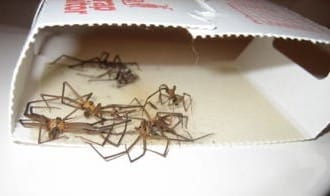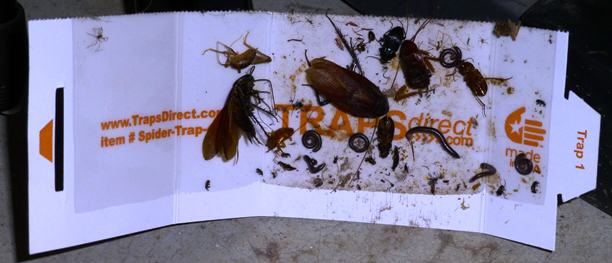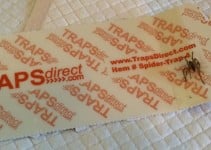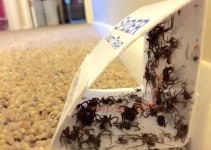No surprise that readers ask us about the best spider traps for trapping a brown recluse spider, or how to catch a hobo spider. Still other readers are looking to stop any house spiders in their tracks.
Don’t get us wrong, we like spiders.. Spiders control insects and are part of the balance of the larger ecosystem. We just don’t like spiders in our deeply personal spaces.. I don’t want a spider in my closet, bedroom or bathroom.. But spiders in the basement or crawl space don’t bother me too much… I digress..
To figure out what to use to catch spiders, we need to step back before describing the pest control solution we are after. Why? Because even the questions of “what is the best spider trap?” implies that we want a spider trap. When shopping for spider control solutions before we label what we are seeking we need to know what is available. What if an insect monitor also trapped spiders? Then would you ask “what is the best insect monitor?“.
Ok, I am being nit-picky, but just to prove the point that in the age of the internet and search engines, what you ask for is what you will find! So what might be asked is “what is the best way to get rid of spiders?”
Insect Monitors vs Spider Traps vs Sprays
When getting rid of spiders pesticide sprays typically come up, but that violates most parents preference to use Pesticide Free spider solutions. So we first throw out the spider killing sprays, aerosols, and dusts. That leaves sticky glue traps as the non-toxic spider control answer (safe around children and pets).
The two type of sticky glue traps are Insect Monitors and Spider Traps. We can look at both:
Insect Monitors
The main factor when it comes to an insect monitor is it’s purpose. The insect monitor is intended to be used by a Pest Control Professional as part of a Integrated Pest Management (IPM) strategy. The idea is to place these small monitors around key areas, and then check them weekly, recording the findings (number & types of insects caught) each week. The goal of the insect monitor is to determine what areas need to have pesticides to resolve an infestation or emerging insect control problem.
Read a more detailed Insect Monitor traps summary
With this in mind, the one word that describes an Insect Monitor is “UTILITY” the entire purpose of the device is to be used as a tool for further use of chemical controls. To this end they have two major issues:
- APPEARANCE
Insect Monitors are not designed for integrated use in the home, they have harsh colors, and IPM grids (to record findings) as well as warnings such as “Do Not Move”. In short, they scream “I HAVE A BUG PROBLEM” at any one who sees them, and they are easily spotted. - CONSTRUCTION
The second problem is actually a bigger issue than the first. It’s the MONITOR aspect of the insect monitor. There are windows on the sides of the insect monitor to allow the exterminator to peer inside and record the spider count. But these windows waste space that could be part of the trap.
Spider Traps
When looking at a spider trap you will often find the monitor windows are removed. Consumer packaging is introduced, but in many cases the big change is for every 8 insect monitors you may only get 1 spider trap. The trouble with a smaller number of spider traps is that spider traps are an intercept method of spider control. Spider Traps don’t draw in spiders (yes, I know lot’s of products make the claim… but the biggest draw of a spider trap is the insects that are all ready in the trap, after all a spider web is just a sticky insect trap that spiders can walk on).
So when looking at spider traps you need to consider the number of traps, size of active trap field and the size of the Active Trap Field Entrance ( ATFE ).
You can read more in Advantage Spider Trap – insect monitors transformed.
Active Trap Field Entrance ( ATFE )
Before buying a spider control device consider the Active Trap Field Entrance ( ATFE ) to help standardize costs across brands. This metric is appearing more often on products as a means of comparison. The Active Trap Field is the length of a trap an insect can enter. And for crawling insects a spider trap or insect monitor is only as good as the total width of the AFTE.
As an example the Standard Insect Monitor has a Active Trap Field Entrance (ATFE) of 6 inches, compared to the Advantage Spider Trap which has a ATFE of 14 inches. That is 233% more entrance for the insects and spiders to be trapped. When comparing prices, you would receive
Conclusions
When it comes down to getting rid of spiders, more traps are better, larger active trap fields are less wasteful, and compare Spider Traps equally with cost per ATFE.




Interesting evolution. I found another measurement for comparing spider traps its called TACF Trap Active Catch Field and claims to be an evolution of the ATFe metric.. Does anyone know about this?